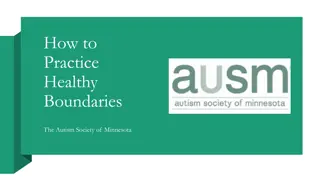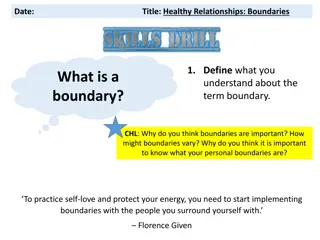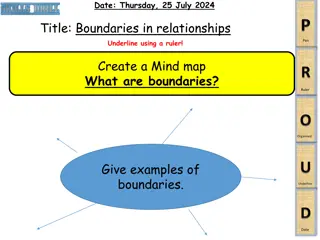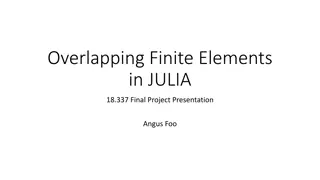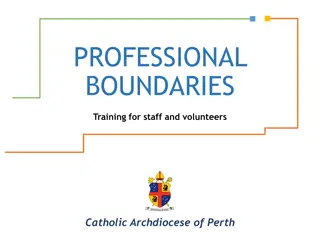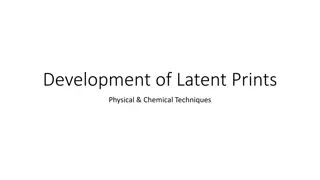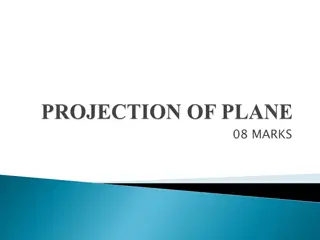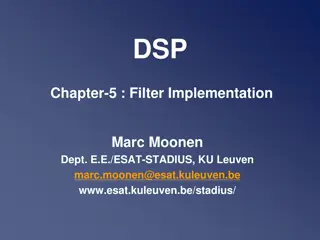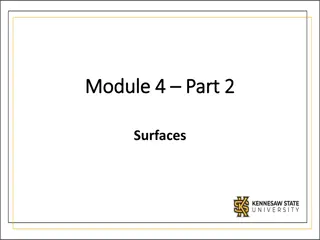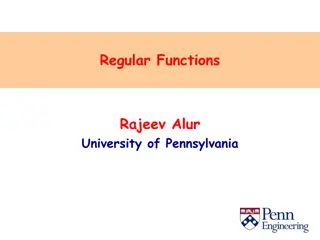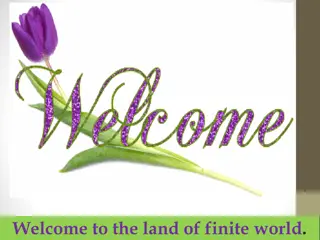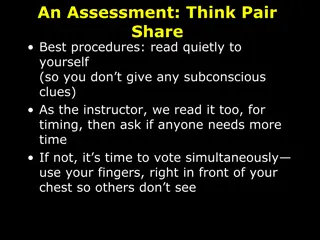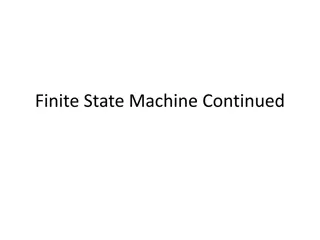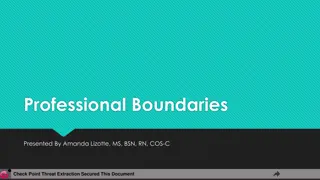Exploring Finite Groups on Compact Surfaces with Boundaries
Illustrating the concept of finite group structures on compact surfaces with boundaries, this presentation showcases transformations, orientations, and color-coding used to represent group elements. By identifying regions in the hyperbolic plane and applying inversions, the images provide insights into the construction of finite groups from free groups, including the intriguing Quaternion Group of Order 8. Bordered Klein surfaces are also delved into, emphasizing the modeling of boundary regions through careful identifications.
Download Presentation

Please find below an Image/Link to download the presentation.
The content on the website is provided AS IS for your information and personal use only. It may not be sold, licensed, or shared on other websites without obtaining consent from the author. Download presentation by click this link. If you encounter any issues during the download, it is possible that the publisher has removed the file from their server.
E N D
Presentation Transcript
A Portrait of a Group on a Surface with Boundary Draw a picture of a finite group on a compact orientable surface with one or more boundary components. A bordered Klein surface is a compact surface with one or more open disks deleted from the surface.
Labeling by Group Elements The elements of the group are represented by transformations of the surface. Each group element takes a fundamental region to another region and the image of the fundamental region under this element is labeled by the element. Regions are distinguished by whether the orientation is preserved or reversed and colored differently.
Transformations of the Plane The surface is formed by identifying regions of a hyperbolic plane. We use the Poincare Disk model of the Hyperbolic plane. Burnside used this approach in 1911 with inversions in circles as the transformations of the plane, which correspond to transformations of the Hyperbolic plane.
Regions in the Plane Inversions in a circle always reverse orientation. Each region is bounded by the fixed points of such an inversion. This means that adjacent regions always have a different color. These regions tile the compact surface.
Free Groups This gives a picture of the Free Group on two generators as a Triangle group in the Hyperbolic Plane. | , , RST T S R = 1
Finite Groups A finite group is obtained from such a free group by identifying words that represent the same group element. This corresponds to identifying the regions in the hyperbolic plane labeled with words representing the same group element. This identification gives the compact surface.
Bordered Klein Surfaces In order to model a boundary region, we must identify a region and an adjacent region. This means that one of the inversions must be identified with the identity. Mathematically, one inversion is in the Kernel of the homomorphism from the infinite group to the finite group.
The Homomorphism This map is a homomorphism from a Non- Euclidean Crystallographic group (NEC group) to the finite group. It follows that has at least 4 generators. This group with maximal symmetry is generated by 4 involutions; a, b, c and d with additional relations (ab)2= (bc)2= (cd)2= (da)3= 1.
Image in the Hyperbolic Plane Each region in the Hyperbolic Plane has at least FOUR sides instead of three. Each face is bounded by curves of different colors, each representing a different involution. One or more of these curves borders a boundary component.
The Real Genus The algebraic genus of a compact orientable surface X of topological genus p with k holes is given by g(X) = 2p + k 1. The real genus of the group G is the number (G) which is the smallest g(X) for any bordered surface X whose group of isometries contains a group isomorphic to X.
Constraints |G| 12( (G) 1) by Hurwitz Theorem. A group that satisfies this bound has maximal symmetry and is called an M* group. There are only two solvable M* groups, the symmetric group S4and the dihedral group D6.
The Groups The group S4has real genus 3 and acts on a sphere with 4 holes (this is topologically equivalent to a tetrahedron with a hole at each vertex). Since S4is the symmetry group of the tetrahedron, we can construct the regions without all of this theory.
Stereographic Projection of the Portrait of S4
The M* group Z2 S3 D6 The dihedral group D6of order 12 has real genus 2 and is an M* group. It can act on a sphere with three holes or on a torus with one hole. Both actions occur and result in interesting portraits.
Modified Homomorphism These finite M* - groups are also images of a group generated by three involutions t, u and v satisfying (tu)2= (tv)3= 1. It follows that all vertices in a portrait of an M* - group, that are not on the boundary, must have degree 4 or degree 6. The order of the image of uv is called the action index of the group.
Consequences The order of uv determines how many faces are adjacent to each boundary component. Every region must border one of the boundary components. All boundary components look alike.
Polygonal Representation of S4 on a sphere with 4 Holes
Polygonal representation of D6 as a Torus with One Hole
Group with Real Genus 5 Let G be a group generated by three involutions t, u and v satisfying (tu)2= (tv)2 = (cd)4= (uv)8= 1 and (uv)3= tvut. This group has order 32 and it is the group of automorphisms of the regular map {4,8}1,1. Also |G| = 8( (G) 1) and so it is NOT an M* - group.
Surface Characteristics The group G acts on a double torus with two holes. The regular map {4,8}1,1has computer graphics already on the web, so I have not constructed a physical model of it.



